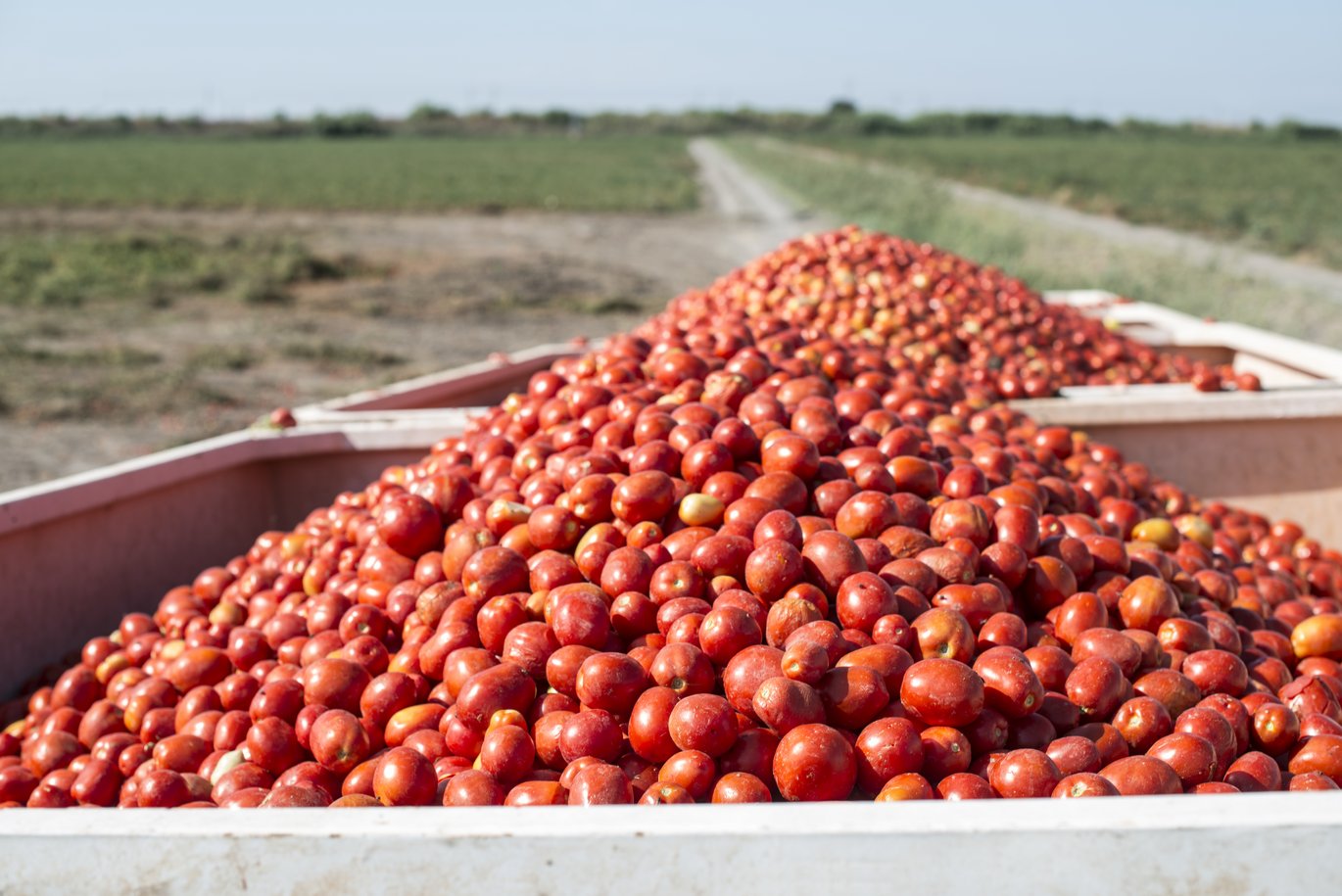Climate change is coming for your ketchup
The bulk of the global production of processing tomatoes is concentrated in a small number of regions where climate change, according to a professor from Aarhus University, is projected to have a significant impact on the future production and supply to the processing tomato industry.


Even though it is characterised as a fruit, the tomato has the nutritional values of a vegetable, and it is in fact considered to be one of the most important vegetables in the world in terms of cultivation areas, commercial use and consumption. There are two types of cultivated tomatoes. One is the tomatoes for fresh consumption - better known as fresh market tomato- usually grown in the controlled environment in greenhouses, the other is grown in the open field and mechanically harvested and are used for canned tomatoes, ketchup, tomato paste etc. and it is known as processing tomato.
“The processing tomatoes are grown in the open fields, which means that we cannot control the environment in which they grow. This makes the production vulnerable for climate change,” Professor Davide Cammarano from Department of Agroecology at Aarhus University explains.
In a new study conducted in collaboration with University of Texas, Purdue University, University of Salerno, University of Florida, and NASA Goddard Institute for Space Studies he predicts vast changes in the processing tomato industry due to the climate change induced rise in temperature in the future.
Significant impact on future supply
Tomatoes are grown in many different parts of the World, but three countries dominate the productions of the processing tomatoes: California in the United States, Italy and China as the main regions.
“We wanted to provide a model-based assessment on the impact for climate change on processing tomato production. And China, Italy and California count for more than 65% of the global production, so naturally we focused on these three regions,” Davide Cammarano explains.
Different projected climate scenarios were used in the study, but all pointed to a future, where processing tomato production will dramatically change within the next 30-40 years.
“Our process-based tomato model project that the production in the three countries will decrease 6% by 2050 compared with the baseline period of 1980-2009,” says Davide Cammarano.
Rise in temperature is the cause
As for all crops, tomatoes have an optimal temperature for growing, and the cardinal temperature for optimal development and yields are between 22 and 28 °C depending on the growth stage. The study predicts a 6% reduction in processing tomato production due to the projected increase in air temperature.
“If the temperature increases as our projections shows, we might look into a future, where the northern California and Italy might not be able to sustain current levels of processing tomato production due to too high temperature as well as water resource constraints,” says Davide Cammarano.
Cooler regions such as northern China and the northern parts of California seem to benefit from the rise in temperature and might, in fact, gain a competitive advantage. According to the Professor we might, in fact, see a future, where after 2050 tomatoes are no longer grown in Italy, instead processing tomatoes might be imported from China or even grown in completely new regions.
“Tomatoes will continue to be grown but probably in other regions than now, so the supply is not under threat as such. But it is important to remember that a significant number of the processing tomato industries currently are placed in Italy, and they need to prepare for a future with limited supply of tomatoes from local regions,” says Davide Cammarano.
Need for change to keep a sustainable production
According to the projections of this study, climate change poses as a big problem for the processing tomato, and within the next 30 years Italy as an example will not be able to produce tomatoes any longer.
“This causes a problem in the supply chain for the industry, if they want to stay in Italy, they will need to get tomatoes from other regions. Logistically this causes a problem, but it is also rather costly both in terms of economy and most certainly also in terms of CO2 emitted during transportation,” explains Davide Cammarano.
In a sub-sequent study, he aims to investigate potential new regions for processing tomato production, which is not just a study of temperature increases around the world.
“Tomatoes need more than the correct temperature to grow, they need a given amount of water, the right soil and nutrient conditions and of course also farmers who know how to grow vegetables,” he explains.
Additional information | |
| We strive to ensure that all our articles live up to the Danish universities' principles for good research communication(scroll down to find the English version on the web-site). Because of this the article will be supplemented with the following information: | |
| Collaborators | Deparment of Agroecology, iClimate, University of Texas, Purdue University, University of Salerno, University of Florida, and NASA Goddard Institute for Space Studies |
| Conflict of interest | None |
| Read more | “Processing tomato production is expected to decrease by 2050 due to the projected increase in temperature” is published in Nature Food. It is written by Davide Cammarano, Sajad Jashidi, Gerrit Hoogenboom, Alex C. Ruane, Dev Niyogi, and Domenico Ronga. |
| Contact | Professor Davide Cammarano, Department of Agroecoloy, Aarhus University. Tel.: +45 9352 2545 or e-mail: davide.cammarano@agro.au.dk |
